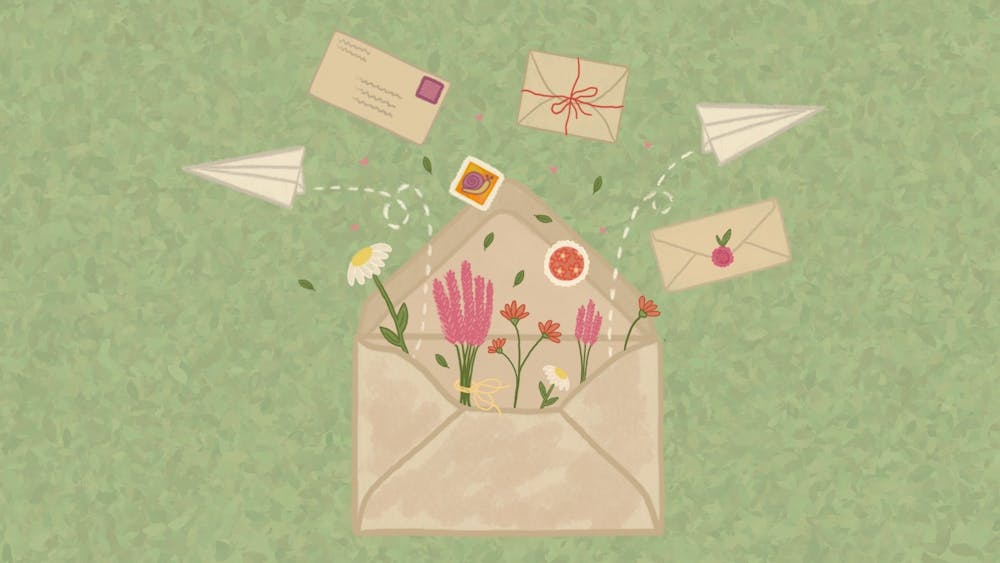I hate texting. Not in an exasperated “Technology will be our demise” and “This generation's going to shit” way, but as more of a slightly frustrated vent. Any form of communication that’s not face to face has its misunderstandings. How can you successfully relay to me your thoughts if I am not there to witness which way your eyebrows curve and the context in which your eyes shine, so I can tread anxiously in your pauses?
I hate texting, not because of its reputation—but how it pales in comparison to its magnificent counterpart—the handwritten letter. Decades and even centuries after they’re written, you can hold the weight of the writer’s soul in your hands.
Take one of the most famous series of letters from literature—the Letters to Milena written by Franz Kafka to his love Milena Jesenská. Exchanged in the 1920s, the letters between the pair were a much riskier alternative to modern texting. Each note drips in angst and longing throughout an illicit affair.
Kafka writes, “I miss you deeply, unfathomably, senselessly, terribly ... I'm tired, can't think of anything and want only to lay my face in your lap, feel your hand on my head and remain like that through all eternity.”
While less romantic, but of great historical significance, a letter from eleven–year–old Grace Bedell inspired the most iconic look in American history. In 1861, she wrote, “I have got four brothers and part of them will vote for you any way and if you will let your whiskers grow I will try and get the rest of them to vote for you, you would look a great deal better for your face is so thin.” In one short paragraph, she inspired Abraham Lincoln's signature beard.
While Beethoven’s recipient can never be traced, not even through SMS tracking, the simple lines to his “Immortal Beloved” are still well known today: “Love demands everything and that very justly—thus it is to me with you, and you with me.”
Street writer Emily Truong encapsulates the immortality of the handwritten letter in her article, “Why You Should Write Letters, Especially Now.” In her interview with Tamara Gelband (C '21), she cites how “in a letter, you get a peek into someone’s thought process. … It’s like a level of self–disclosure that you can get to in in–person conversations but [not] when texting.”
Texting is easy, accessible, and quick. But convenience is not romantic. You don’t despise convenience, but you don’t long for it either—it’s just there.
Now, I am not here to say the typed word cannot be poetic (as I write to an online publication). Still, there is a sense of vulnerability lost in having the backup of a “Sorry!—wrong person.”
To handwrite a letter to someone is to show them you care enough to find supplies and to surrender yourself to the paper you shipped to the mailbox or home you voyaged to. You make the conscious decision to open yourself to that person because a “Sorry!—accidentally signed, sealed, delivered” is slightly less believable.
We also often underestimate the intimacy of penmanship. Some of the sharpest images of my childhood are filled with the elegant scribbles of my grandma’s grocery list and or my childhood best friend who looped her Ps and Qs like the posters that hung in her room.
Maybe you write in a half–cursive hybrid because they stopped teaching you after 3rd grade.
Maybe each letter takes up two blue lines in your cheeky manner of filling up an assignment page growing up.
I want to notice how your state of mind changes based on the neatness of your words. I want to interpret the messy genius of your scribbles as your hand catches up to your head. So, when I open an envelope to the scent of the bubblegum gel pen you got from the fourth grade book fair, I feel closer to you.
One of my favorite letters is covered with rushed blue scribbles on hospital stationery. Dated in 1953, written by “somebody who is crazy and vehemently in love with [the recipient],” who, while in the same breath, calls him “such an ugly son of a bitch.”
Frida Kahlo’s “I’m Amputating You” letter to her ex–husband Diego Rivera remains one of the most bittersweet and accurate depictions of their relationship. She’s surrounded by doctors pushing her into surgery, but before she loses her leg, she demands to write one last letter—closure to an abusive and adulterous relationship.
The most painful part, she writes, is not that they should never speak again, or that he cheated on her with her sister, and not even that she’s losing her leg. It’s the fact that, despite everything, she still holds him fondly in her heart.
“That is all, I can now go to be chopped up in peace. Goodbye from somebody who is crazy and vehemently in love with you.
Your Frida.”
Letter writing is not all love and gel pens; sometimes it's a way to release emotions and piling resentments. Instead of having your recipient deciphering your hostility through a lack of exclamation points or smiley faces, you materialize your vexes through each hard handed stroke of lead.
So whether you’re feeling romantic, frustrated, or nostalgic, feel and feel deeply—just put it down on paper.







